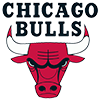Last week, I looked at how long an owner should endure a prospect's struggles in light of Byron Buxton's anemic production so far in his career (.223/.260/.355), and several commenters brought up some questions on the difference between the upside of the extreme top players. I looked at players in the top 20, but Buxton came into the season as the No. 1 prospect according to some publications. Today, I will expand on last week's discussion and look more at the top rated prospects and how they perform.
The main point of that article was to figure out how long we should wait on prospects. In the past, several people, including myself (2016 Hardball Times Annual) have attempted to show a highly-rated player's overall career value. Scott McKinney (Royals Review), Neil Paine (FiveThirtyEight), and Victor Wang (SABR by the Numbers) all did some great work and those pieces are well worth the reads to get an idea of top prospect values. I will get back to prospect value in a bit, but let me start again with the time frame for a prospect to break out.
The first question comes from RotoWire managing editor Chris Liss:
Great article, Jeff. Would love to see it with just top-5 or top-3 hitting and pitching prospects if we're making comps to Buxton. I know the sample would be smaller, but I'd be more inclined to gamble on the guy they universally think is No. 1."
This
Last week, I looked at how long an owner should endure a prospect's struggles in light of Byron Buxton's anemic production so far in his career (.223/.260/.355), and several commenters brought up some questions on the difference between the upside of the extreme top players. I looked at players in the top 20, but Buxton came into the season as the No. 1 prospect according to some publications. Today, I will expand on last week's discussion and look more at the top rated prospects and how they perform.
The main point of that article was to figure out how long we should wait on prospects. In the past, several people, including myself (2016 Hardball Times Annual) have attempted to show a highly-rated player's overall career value. Scott McKinney (Royals Review), Neil Paine (FiveThirtyEight), and Victor Wang (SABR by the Numbers) all did some great work and those pieces are well worth the reads to get an idea of top prospect values. I will get back to prospect value in a bit, but let me start again with the time frame for a prospect to break out.
The first question comes from RotoWire managing editor Chris Liss:
Great article, Jeff. Would love to see it with just top-5 or top-3 hitting and pitching prospects if we're making comps to Buxton. I know the sample would be smaller, but I'd be more inclined to gamble on the guy they universally think is No. 1."
This question is fairly easy to look at after just running the numbers last week. Research scope from last week's article:
Here are the facts looking at all the Baseball America prospect rankings from 1990 to 2010. I am not including the most recent seasons, so the player has time to develop in the minors and hopefully become an above average MLB regular/fantasy asset. I used 3 WAR as the cutoff to find the top pitchers who make a difference.
Top 5 Pitcher
Pitchers: 27
Made it to the majors: 22 (81%)
> 100 IP in career: 21 (78%)
Total fWAR > 2: 18 (67%)
One 3 WAR season: 14 (52%)
3 WAR Season year 1: 1 (4%)
3 WAR season in first 2 seasons: 6 (22%)
3 WAR season in first 3 seasons: 9 (33%)
3 WAR season in first 4 seasons: 10 (37%)
3 WAR season in first 5 seasons: 11 (41%)
Top 20 (for reference)
Pitchers: 101
Made it to the majors: 92 (91%)
> 100 IP in career: 85 (84%)
Total fWAR > 2: 77 (77%)
One 3 WAR season: 51 (51%)
3 WAR Season year 1: 4 (4%)
3 WAR season in first 2 seasons: 19 (19%)
3 WAR season in first 3 seasons: 36 (36%)
3 WAR season in first 4 seasons: 43 (43%)
3 WAR season in first 5 seasons: 48 (48%)
It seems those pitchers who make the top five perform just a tad bit worse than the top 20. The difference could be attributed to the small sample, but the top rated pitchers don't have a huge advantage. The same percentage reach the 3 WAR season and it takes them pitchers longer to reach the total.
Here is the same analysis, but with hitters:
Top 5 Hitter
Hitters: 55
Made it to the majors: 52 (95%)
> 300 PA in career: 51 (93%)
Total fWAR > 2: 48 (87%)
One 3 WAR season: 39 (71%)
3 WAR Season year 1: 1 (2%)
3 WAR season in first 2 seasons: 9 (16%)
3 WAR season in first 3 seasons: 16 (29%)
3 WAR season in first 4 seasons: 23 (42%)
3 WAR season in first 5 seasons: 32 (58%)
Top 20 Hitter (for reference)
Hitters: 173
Made it to the majors: 156 (90%)
> 300 PA in career: 148 (85%)
Total fWAR > 2: 124 (72%)
One 3 WAR season: 98 (57%)
3 WAR Season year 1: 7 (4%)
3 WAR season in first 2 seasons: 27 (16%)
3 WAR season in first 3 seasons: 51 (29%)
3 WAR season in first 4 seasons: 67 (39%)
3 WAR season in first 5 seasons: 79 (45%)
With hitters, the success rate is significantly higher for the top 5 guys, with the 3 WAR threshold 14 percent higher. It still takes these hitters a while to reach the thresholdm with the majority of the 3 WAR hitters needing at least three seasons. Just as much patience should be observed with Buxton as with any top 20 hitter.
The second question from the article was on the magnitude of success:
Derek VanRiper: My hypothesis pertaining to Liss' comment would be that the elite prospects, while capable of failing miserably have higher payoffs when they connect, and thus, the expected return is considerably higher with a certain cut-off point.
Chris Liss: Right DVR - there are two axes to this: (1) rate of success and (2) magnitude of success. It might be the case that only (2) increases as you move from 20 to 5, but I'd bet it's both.
While I was looking for the season of breakout, the magnitude of success is a reasonable question. I used 3 WAR as a threshold with some players accumulating higher values. My recommendation would be to look at Scott McKinney's prospect article where he really breaks down the return on value for position players and pitchers.
In a chart, he has his own Bust and Superior values for each grouping of 10 players. Here are the values for the top 40 players:
Pitchers: Bust% - Superior%
1 to 10: 59% - 27%
11 to 20: 63% - 19%
21 to 30: 79% - 14%
31 to 40: 78% - 4%
Hitters:
1 to 10: 37% - 40%
11 to 20: 41% - 40%
21 to 30: 62% - 18%
31 to 40: 65% - 26%
The superior rate drops off quickly with pitchers from the top 10 to the next 10. With hitters, the drop off happens after the first 20. Both the Kinney and Paine articles have almost identical logarithmic graphs showing the decline from the top few players to rest. McKinney writes on the subject:
We can see that average performance drops quickly over the first quintile of rankings and nearly flattens out.
Putting all the above information into effect, I would go with the following rules when dealing with prospects:
- Don't put too much investment into a prospect, as most will fail;
- More production can be expected from the higher ranked players. Players ranked in the top 20 should have extra value placed on them;
- Have some patience with prospects. Of those who succeed, most need until their third MLB season to break out.
Hopefully, the preceding two articles were enough on prospects for a while. Some questions from the last article were answered, but always feel free to ask more.






































